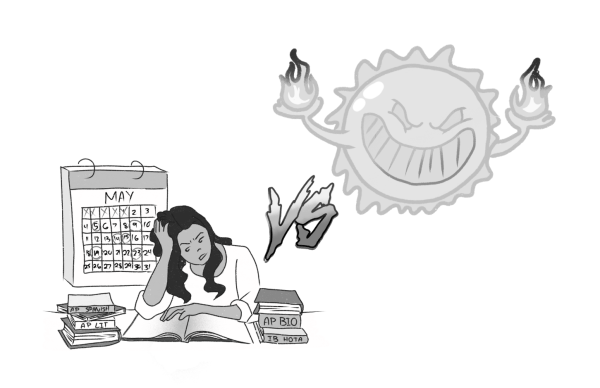Updated Dress Code Sparks Student Body Protest About Sexism
The dress code — a set of rules that caused an uproar. New to CHS, the revamped dress code implemented this summer had become a contentious issue. This is nothing new to other schools, however, this is a recent first for CHS. Since its implementation, there have been constant debates with many furious students.
All students attending CHS should be somewhat aware of the dress code and the drama it has caused. A revised dress code was implemented this summer a few days before school started leaving many students expressing outrage that the code was too restrictive and was unfairly targeting women. Students at the school then decided to raise their voice and protest against the injustice they felt like they were facing, coming together and having a petition signing in front of Honnold Library on August 25, attempting to raise awareness.
The dress code was full of revised rules that consisted of phrases such as, “Spaghetti straps must be covered at all times,” and “Shorts must have a minimum of a 3 inch inseam.” Many of these rules infuriated CHS students as they believed that the rules were sexist because they felt like it only targeted girls. Students were also angry because they believed that the school wishes them to cover up for the sake of the males at the school because it distracts them from their learning environment. However, there is no explicit mention of this version of reasoning behind the updated code.
“I think that the new dress code is very restrictive and disproportionately targets female students. I think within the students, and even the old dress code they have reverted back to is still sexist,” sophomore and petition signer Fiona Baler said.
On the other hand, students who agree with the dress code feel that other CHS students are overreacting. They believe that a dress code implemented at the school is beneficial for students who do not know how to be modest as it can be distracting and uncomfortable when an individual is wearing immodest clothing. Being modest is not a crime as it can benefit both the students who are wearing the clothes and their peers. They believe that following a dress code can lead to an environment where everyone feels comfortable.
“Time in schools could be considered equivalent to time in a workplace, and studies have shown that schools with uniform policies have better results in terms of learning,” junior Lauren Kula said. “On that spectrum, the dress code tends to be on that end rather than being completely free form. On the that same note, it is not unreasonable to ask for more formal dress. Students can still express themselves in their clothing, and I do not think the dress code is restrictive enough for us, as students, to not respect.”
Through all of the debates back and forth and the whole petition signing, the school has handled the situation by deciding to revert to the old dress code until they can fully discuss where the new dress code should lead and how the school and students can meet halfway to compromise together. Thanks to the schools understanding and the boldness of the students, hopefully no outsparks will happen again.
Hello there! Our goal is to provide relavent, engaging journalism for readers of all ages. Your donation will support the student journalists of the Wolfpacket at Claremont High School, and will allow us to purchase equipment, print our monthly issues, and enter in journalism competitions. We appreciate your consideration!

Bridget Englebert is a senior at Claremont High School and this is her fourth year on Wolfpacket. Working as Co Head Editor for the sports section, she...











